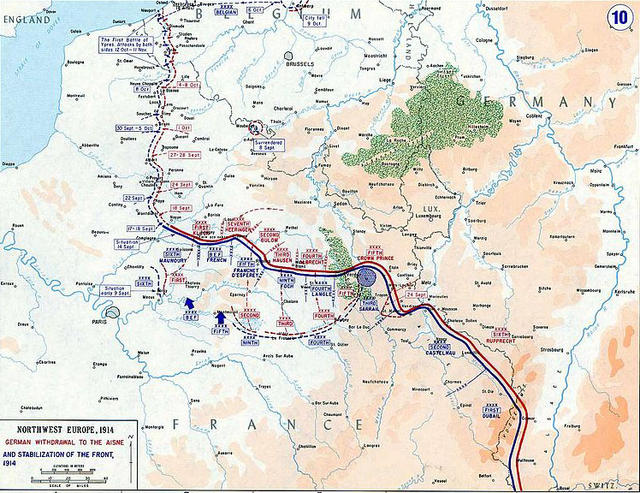Nelson Mandela was born into a world of war, revolutionary upheaval and a worldwide influenza pandemic. In July 1918, when Mandela was born, the First World War was still raging with no end in sight. In January General T.E. Lawrence led an army of Arab soldiers against Turkish forces in Palestine. America had entered the war on the side of the Allies - Great Britain, France, Russia - in April 1917, and sent troops to reinforce the Western Front (see Map 1. In March, Germany, whose troops were now freed from her eastern front, launched five major offensives against Allied troops.
On 18 July, the day Mandela was born in the village of Mvezo, Transkei, the Allies, strengthened by American reinforcements, launched a counterattack against German forces. By August, the German army was forced back to the Hindenberg line. By September, the Allied forces under General Haig succeeded in breaking through the Hindenberg Line at several points. When Germany’s allies, Bulgaria and Turkey concluded armistice treaties in October, the end of the war was within sight. By the end of that month the German government requested an armistice. The war finally came to end on 11 November when an armistice was signed.
The Russian Revolution which began in February 1917 led to the overthrow of centuries of Tsarist autocracy. It began as a spontaneous demonstration against the shortage of bread, but soon developed into a full-scale revolt of workers, soldiers and peasants against conditions of hardship and poverty that was a direct result of Russia’s involvement in the First World War. The soldiers who were called upon to suppress the demonstration joined the protestors. Tsar Nicholas 11 was forced to abdicate and a provisional government was formed. The slogan of the revolution was ‘Bread, Peace and Land’. When the Provisional Government failed to act to end Russia’s involvement in the war, popular support grew for the Bolsheviks led by Leon Trotsky and Vladimir Ulyanov Lenin. In October the Bolsheviks took power and established the world’s first communist state. The Bolsheviks began negotiations with the German Government, and by March 1918, Soviet Russia concluded the Brest-Litovsk Treaty with Germany, ending her involvement in the First World War.
In Germany itself the war led to an outbreak of revolution and civil war, which by 1919 had resulted in the demise of the imperial monarchy and the establishment of a German republic. Between November 1918 and January 1919 Germany was plunged into civil unrest and revolution.In the course of this unrest the Spartacist League led by Rosa Luxemburg and Karl Liebknecht played a leading role. The Spartacist League was a leftwing revolutionary faction of the German Social Democratic Party that was anti-war.It agitated for mass strikes among workers to end the war. In January 1919 the Spartacist League became the Communist Party of Germany and urged members of the revolutionary councils to fight for a socialist revolution. They were opposed by the Social Democratic Party (SDP), led by Friedrich Ebert who controlled the Government and police. The SDP formed an alliance with rightwing elements in the military and police, to crush crushed the uprising. In the course of this revolution, the Communist Party led by Karl Liebknecht and Rosa Luxemburg drew mass support. A communist revolution was aborted when Liebknecht and Luxemburg were murdered by members of the Freikorps (Militia).
In South Africa the War had led to profound economic, social and political changes. During the War, South Africa experienced a severe shortage of manufactured goods, as the European economy was geared towards the production of armaments. The scarcity in manufactured commodities led to a growth in the development of the local manufacturing industry in many of the British dominions, including South Africa. The First World War was the single most important factor that contributed to the development of South Africa’s secondary industry. Before the war, mining was the predominant contributor to South Africa’s Gross Domestic Product (GDP). The outbreak of the First World War was to change that. Between 1915 and 1920, the number of manufacturing industries increased by 72%. Many White workers left to fight in France along the Western front, leading to a shortage of labour at the very moment that the growth of the manufacturing industry led to an increased demand for labour. Combined with the push factor of increased rural impoverishment as a result of the 1913 Land Act, the war led to rapid urbanisation and the proletarianisation of the African population. By the end of the war the number of mainly African unskilled workers in the urban areas had increased by 83%. (Grundlingh: 1982: 19)
